Hunan Botanical Garden is located in Dongjing Sub-district, Yuhua District, Changsha City, Hunan Province. It is a national 4A-level tourist attraction and a national-level popular science education base. Covering an area of approximately 140 hectares, the garden has a forest coverage rate of over 90% and houses more than 3,000 species of rare plants. It is a comprehensive botanical garden integrating plant protection, scientific research, popular science, and sightseeing. Featuring the theme of "Nature, Science, Culture", the garden has built more than 20 specialized gardens such as the Cherry Blossom Garden, Rhododendron Garden, and Rare Plant Garden. Every spring, when flowers like cherry blossoms and tulips are in full bloom, it attracts a large number of tourists.
History and Culture
Hunan Botanical Garden was founded in 1985 with joint investment from the People's Government of Hunan Province and the National Forestry and Grassland Administration. It officially opened to the public in 1994. In the early stage of its establishment, the main goal was to collect and preserve subtropical plant resources. After years of development, it has gradually become an important germplasm resource bank for plants in Central South China.
The garden retains part of the original vegetation and landforms, while integrating elements of Huxiang culture. For example, the garden design embodies the artistic conception of the "Eight Sceneries of Xiaoxiang", and a display area for Hunan's native plants has been built to showcase the unique plant ecology and regional culture of Hunan. In 2012, the garden was recognized as the "Hunan Provincial Environmental Education Base" and holds more than 200 popular science activities every year, serving as an important window for disseminating plant science knowledge.
Main Attractions
Cherry Blossom Garden
The Cherry Blossom Garden covers an area of about 30 mu (2 hectares). It has more than 20 cherry blossom varieties, with a total of over 5,000 trees, including Somei Yoshino, Kanzan, and Weeping Cherry. From mid-to-late March to early April every year, cherry blossoms are in full bloom, forming a 400-meter-long Cherry Blossom Avenue. It is a popular spot for flower viewing in Changsha in spring, receiving an average of over 10,000 tourists per day.
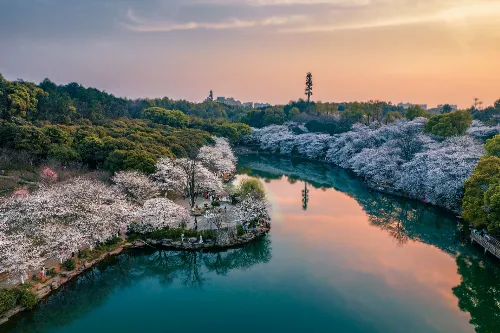

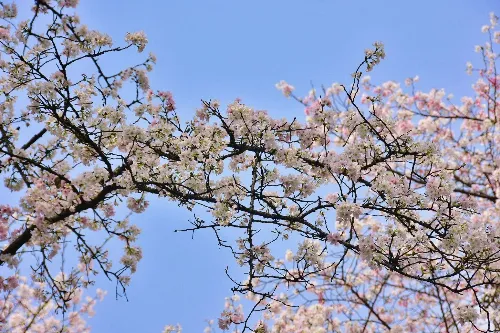
Tulip Garden
The Tulip Garden covers an area of 20 mu (1.33 hectares). From winter to spring every year, it displays more than 50 tulip varieties, with a total of about 100,000 bulbs. Matched with bulb flowers such as hyacinths and daffodils, it forms a colorful flower field landscape. The garden is equipped with landscape decorations like Dutch windmills, creating a strong European style and making it a popular spot for taking photos.

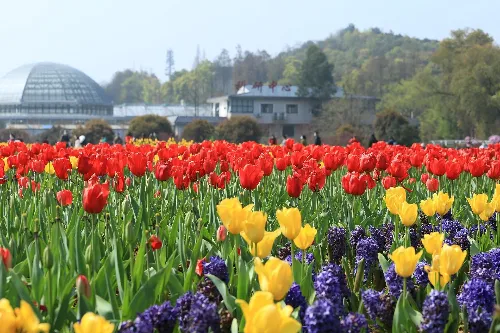
Rare Plant Garden
The Rare Plant Garden covers an area of 15 mu (1 hectare). It collects and preserves more than 10 species of national first-class protected plants such as Davidia involucrata (dove tree), Cathaya argyrophylla (silver fir), and Bretschneidera sinensis, as well as more than 30 species of Hunan's endemic plants such as Diospyros xiangguiensis and Rhododendron hunanense. A greenhouse has been built in the garden to provide a suitable growing environment for rare plants, serving as an important venue for scientific research and popular science.
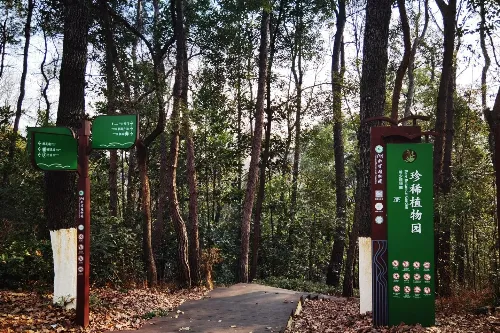

World Famous Flower Garden
The World Famous Flower Garden covers an area of 25 mu (1.67 hectares). It has introduced more than 1,000 species of ornamental flowers from around the world, divided into regions such as the European Garden, American Garden, and Asian Garden. The garden has flowers in all seasons: peonies in spring, water lilies in summer, chrysanthemums in autumn, and plum blossoms in winter bloom in turn, demonstrating the flower culture and garden art of different regions.
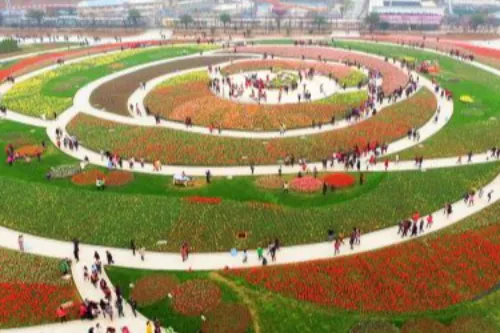
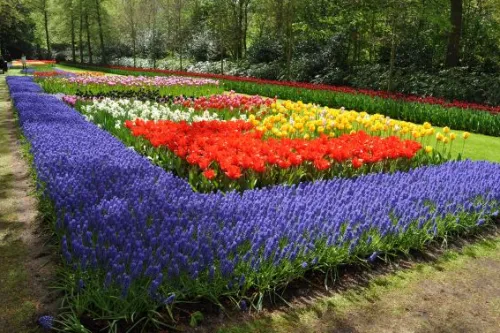
Hydrangea Garden
Built in 2017, the Hydrangea Garden covers an area of 7,000 square meters, concentrated under the Prunus serrulata var. lannesiana 'Albo-rosea' (Plena Cherry) forest. It collects more than 40,000 plants of 41 hydrangea varieties, including Hydrangea paniculata and cold-resistant hydrangeas. Well-known varieties include "Hydrangea macrophylla", "Bodensee", "Pearl", "Gem", "Jade", "Diamond", "Classic Red", "Cat's Eye", and "Endless Summer".
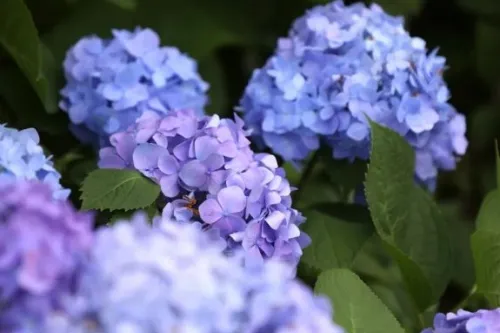
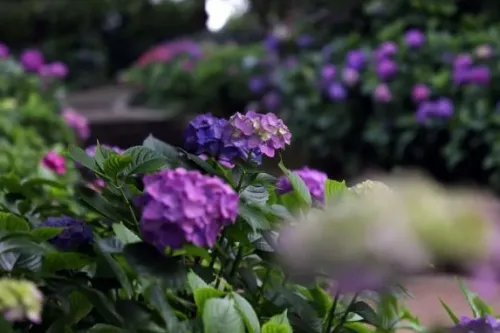
Peach Blossom Garden
Established in 2017, the Peach Blossom Garden covers an area of 2 hectares. It currently collects and preserves 35 peach varieties from home and abroad, such as 'Man Tian Hong' (All-Sky Red), 'Zhao Shou Hong' (Upright Red), 'Ren Mian Tao Hua' (Peach Blossom Like Human Face), and 'Tao Hua Xian Zi' (Peach Blossom Fairy). Among them, there are 24 upright peach varieties, 3 weeping peach varieties, 4 dwarf peach varieties, and 4 broom-shaped peach varieties. The flowering period of peach blossoms is mainly from the end of February to the middle and late April.
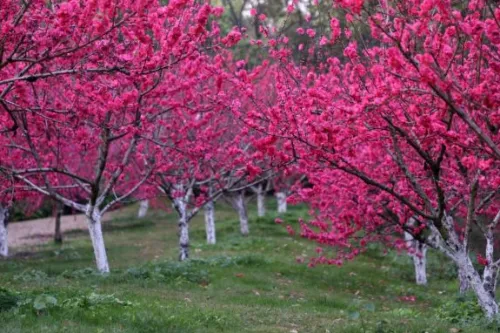
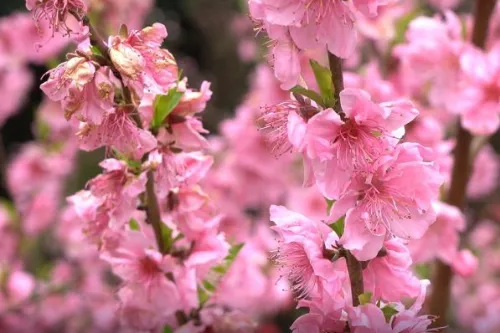
Tour Route
Recommended Tour Route: Enter from the North Gate of the garden, first visit the Cherry Blossom Garden (key viewing from March to April), then go to the Tulip Garden (December to April), then head to the Rare Plant Garden to learn about endangered plants, and then walk to the World Famous Flower Garden to enjoy flowers from various countries. Have lunch at the Hunan-style Snack Street at noon, visit the Science Popularization Hall in the afternoon (to learn about plant science knowledge), and finally exit from the West Gate. The whole journey is recommended to take 4-5 hours. If visiting in autumn, you can focus on visiting the Sweet Osmanthus Forest (September to October) and the Liquidambar Formosana Forest (November to December).
Tour Suggestions
- Spring (March to May) is the peak season for flower viewing. It is recommended to arrive before 9 a.m. on weekdays to avoid crowds; in autumn (September to November), you can enjoy sweet osmanthus and red maples, with relatively fewer tourists.
- Bring a lightweight backpack and comfortable sports shoes, as the walking routes in the garden are long; it rains frequently in spring, so you can prepare a folding umbrella; in summer, you need to take sun protection measures, as there are few shaded areas in the garden.
- Catering in the garden is concentrated at the "Hunan-style Snack Street" near the North Gate and the "Ecological Restaurant" at the West Gate. The average consumption at the snack street is 20-30 yuan per person, and 50-80 yuan per person at the ecological restaurant. You can also bring your own lunch for a picnic on the lawn.
- Follow the official WeChat public account "Hunan Botanical Garden" to check real-time flower information and event previews. During peak seasons, you can also book free guided tour services.
Notes
- Pets are not allowed in the garden. Smoking and littering in the garden are prohibited, and violators will be fined 50-200 yuan.
- Warning lines and signboards are set up in the flower viewing areas. Entering the flower fields for taking photos, picking flowers, and climbing trees are prohibited to avoid damaging plant growth.
- The temperature in the greenhouse is relatively high, reaching over 35°C in summer. You need to pay attention to preventing heatstroke when visiting; some exhibits in the Science Popularization Hall are fragile cultural relics, so touching them should be avoided.
- There are many water areas in the garden, especially the artificial lake next to the Cherry Blossom Garden. Tourists with children need to keep an eye on them at all times to prevent drowning.
- The traffic around the garden is congested on weekends and holidays. It is recommended to give priority to public transportation; when leaving by self-driving, you need to drive in an orderly manner according to the parking lot signs to avoid scratches.
Transportation
- Bus: Take Bus No. 7, 17, 102, 103, 120, 123, 140, 141, 147, 209, 210, 229, 230, 239, 276, 27, 502, 702, 801, 802, or 806 and get off at the "Hunan Botanical Garden" stop, then walk about 200 meters to reach the garden.
- Subway: Take Changsha Metro Line 5 to "Maozhutang" Station, exit from Exit 1, transfer to Bus No. 210 or 239 to the "Hunan Botanical Garden" stop, or take a taxi for about 5 minutes to arrive.
- Self-driving: Navigate to "North Gate of Hunan Botanical Garden". The garden has a parking lot with a charging standard of 5 yuan per hour and a maximum of 30 yuan per day. Parking spaces are relatively tight on weekends and holidays, so it is recommended to arrive before 9 a.m.
Opening Hours
The garden is open all year round, with opening hours from 7:30 a.m. to 6:00 p.m. (entry stops at 5:30 p.m.). Among them, the greenhouse is open from 9:00 a.m. to 5:00 p.m., and the Science Popularization Hall is open from 9:30 a.m. to 4:30 p.m. From March 1st to May 31st and September 1st to November 30th every year is the peak tourist season of the garden, and the opening hours are extended to 6:30 p.m. on weekends and holidays (entry stops at 6:00 p.m.).
Tickets
The garden is open for free but requires a reservation. Some projects in the garden require separate charges.
You can search for the official WeChat public account "湖南省植物园" on WeChat to get the latest updates or book tickets online.


